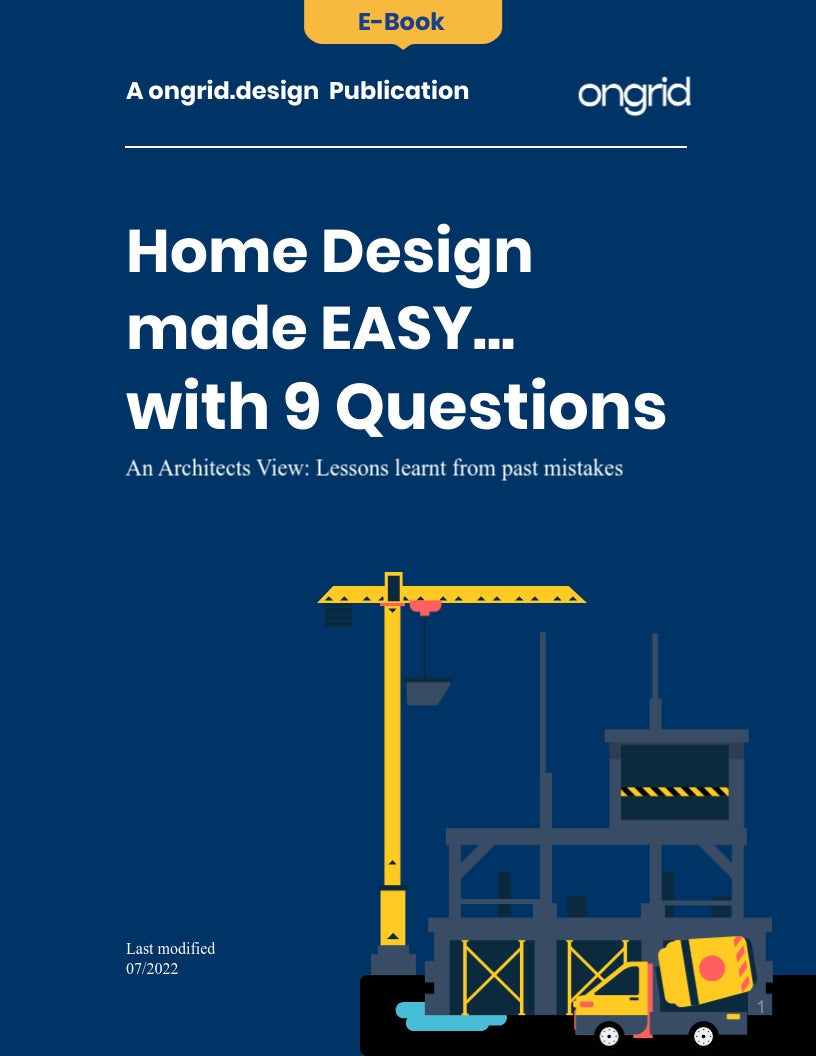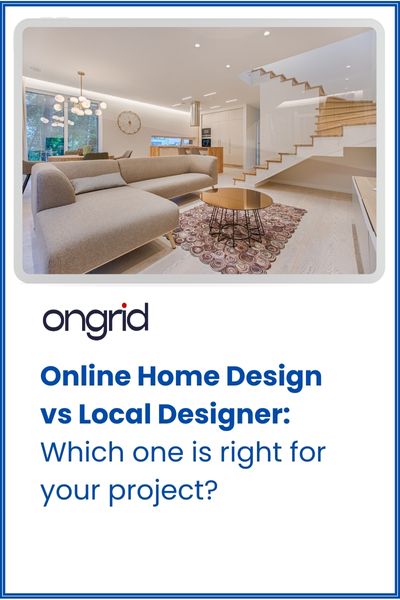8 Safe and Comfortable Home Strategies when Designing for Parents
 Designing Functional Spaces for Aging In Place: An Architect's Guide for Maharashtra Homes
Designing Functional Spaces for Aging In Place: An Architect's Guide for Maharashtra Homes
The dynamics of housing in India are rapidly changing, especially with the growing segment of the elderly population. Today, the homes we build need to be more than just aesthetically pleasing – they need to cater to the evolving needs of their inhabitants, particularly the aging demographic. Designing homes that are not only comfortable but also safe and accessible for older adults is becoming increasingly crucial. This guide offers insights into the design principles, planning considerations, and maintenance strategies for creating functional spaces that allow for aging in place.
Section 1: Understanding Aging and Home Design
 The concept of 'aging in place' refers to the ability of an individual to live in their own home and community safely, independently, and comfortably, regardless of age, income, or ability level. This growing trend reflects the desire of many older adults to maintain their independence and remain in familiar surroundings as they age.
The concept of 'aging in place' refers to the ability of an individual to live in their own home and community safely, independently, and comfortably, regardless of age, income, or ability level. This growing trend reflects the desire of many older adults to maintain their independence and remain in familiar surroundings as they age.
In architecture and interior design, we encounter the terms 'geriatric design' and 'age-friendly design' as we start addressing the needs of this demographic. Geriatric design involves creating spaces that accommodate the physical, sensory, and cognitive changes that come with aging. Similarly, age-friendly design pertains to creating an environment that respects and includes older adults by considering their specific needs and limitations.
The World Health Organization classifies anyone over the age of 65 as elderly or a geriatric patient. However, it's important to note that aging is a process, and its impact on an individual's abilities and needs can vary widely.
Section 2: The Importance of Home Design for the Elderly
 Home design plays a vital role in ensuring the safety, comfort, and independence of older adults. As people age, they may experience changes in mobility, vision, hearing, and cognition, all of which can affect their ability to navigate and use their homes effectively.
Home design plays a vital role in ensuring the safety, comfort, and independence of older adults. As people age, they may experience changes in mobility, vision, hearing, and cognition, all of which can affect their ability to navigate and use their homes effectively.
Consider the nature of an old age home or a home designed for the elderly. It isn't merely about providing shelter. Instead, it aims to create an environment that supports the physical and emotional wellbeing of its residents, promoting a sense of dignity, autonomy, and community.
Architectural and design interventions can significantly enhance the quality of life for the elderly. Thoughtful design choices can reduce the risk of accidents, improve accessibility, foster social interaction, and enhance mental wellbeing.
Section 3: Key Principles of Home Design for the Elderly
 When designing a home for the elderly, three fundamental principles should guide our approach: Safety, Accessibility, and Comfort.
When designing a home for the elderly, three fundamental principles should guide our approach: Safety, Accessibility, and Comfort.
Safety: This principle is paramount in geriatric design. It involves minimizing the risk of falls or injuries, incorporating non-slip flooring, adequate lighting, grab bars in bathrooms, and other safety features.
Accessibility: Homes should be designed to cater to the changing mobility needs of the elderly. This includes wider doorways for wheelchair access, lower kitchen countertops, and switches and outlets that are easy to reach.
Comfort: A comfortable home is one that can be easily navigated and used without physical strain. It also involves creating spaces that promote relaxation and social interaction, contributing to the emotional wellbeing of the residents.
Applying these principles to an old age home design ensures a living environment that is supportive, intuitive, and responsive to the unique needs of older adults.
Stay tuned for our next section where we'll dive into the specifics of designing a home for the aged.
Section 4: How to Design a Home for the Aged
Designing a home for the elderly requires an empathetic approach and an understanding of the potential limitations that come with aging. Here are some key strategies:
-
Floor Plan: The layout should facilitate easy movement. Open floor plans with fewer barriers are usually preferable. Ensure that there's ample space for a wheelchair or a walker.

-
Lighting: As vision deteriorates with age, lighting becomes even more critical. Incorporate plenty of natural light and ensure every area is well lit to prevent accidents.

-
Bathrooms: Bathrooms can pose a risk for slips and falls. Install grab bars, use non-slip tiles, and consider a walk-in shower instead of a tub.

-
Bedrooms: Position the bedroom on the ground floor to avoid stairs. Ensure the bed height is appropriate, and there's enough room for easy navigation.

-
Kitchen: Keep frequently used items within reach. Consider installing pull-out shelves, lever-style handles, and easy-to-read controls on appliances.

-
Entryways: Entryways should be step-free, and doors should be wide enough to accommodate a wheelchair or walker.

-
Furniture: Choose furniture that is sturdy and easy to get in and out of. Ensure there's ample space to move around the furniture.

-
Color Contrast: Use contrasting colors for walls, floors, and countertops to aid individuals with poor vision.

By employing these design elements, we can create spaces that not only meet the practical needs of older adults but also provide an environment that supports their comfort and independence.
Section 5: Old Age Home Plan Considerations
 When planning for an old age home, understanding the age structure of the elderly is essential. The needs of a relatively young senior may vastly differ from those in advanced age or with significant health issues. Always consider this diversity when designing spaces.
When planning for an old age home, understanding the age structure of the elderly is essential. The needs of a relatively young senior may vastly differ from those in advanced age or with significant health issues. Always consider this diversity when designing spaces.
Additionally, communal areas for social interaction, green spaces for tranquility and relaxation, accessibility features like ramps and lifts, and health care facilities should be part of the design considerations in an old age home plan.
Section 6: Maintenance of Homes for the Elderly
 Maintaining a home for the elderly goes beyond just cleanliness and repairs. Regular safety checks should be carried out to ensure features like grab bars, handrails, and ramps are secure. The functionality of lights, alarms, and other safety installations should be regularly monitored.
Maintaining a home for the elderly goes beyond just cleanliness and repairs. Regular safety checks should be carried out to ensure features like grab bars, handrails, and ramps are secure. The functionality of lights, alarms, and other safety installations should be regularly monitored.
Equally important is the upkeep of outdoor spaces. Pathways should be kept clear of obstacles, and gardens or lawns should be regularly maintained to ensure they are safe and enjoyable spaces for the residents.
Up next, we'll explore some real-life examples of homes in Maharashtra that have been thoughtfully designed with these principles in mind.
Section 7: Case Study/Examples
Case Study 1: Effortless Home Design - Mr. Kunwar's Journey with OnGrid
Located in Pune, Mr. Kunwar's home was transformed by OnGrid into a space that is as aesthetically pleasing as it is functional. By prioritizing easy navigation, abundant natural light, and incorporating safety features, this home truly encapsulates the essence of age-friendly design. Read More
Case Study 2: Revolutionizing Residential Architecture - A Modern Duplex Home Design
This duplex home, designed by OnGrid, features an open floor plan that facilitates easy movement. With carefully considered features such as non-slip tiles in the bathroom, spacious bedroom designs, and an accessible kitchen layout, this duplex serves as an excellent example of geriatric design principles in action. Read More
Case Study 3: A Haven of Serenity - OnGrid Designs Farm House in Karjat, Maharashtra
This farmhouse exemplifies how spaces can be both age-friendly and harmonious with nature. Featuring step-free entryways, spacious outdoor green spaces, and areas for social interaction, this design demonstrates how old age homes can foster a sense of community while providing a tranquil retreat. Read More
Conclusion
Designing homes for the elderly goes beyond creating a safe and accessible environment. It's about enhancing the quality of life for the residents, promoting their independence, and nurturing their emotional well-being. As our examples have shown, this can be achieved through thoughtful and innovative design solutions.
Let's Talk
Designing your home or planning an old age home? Let our accredited professionals from the Council of Architecture, India, guide you through this process. We at OnGrid, an award-winning architecture and interior design firm, are dedicated to creating spaces that are not just aesthetically pleasing but are also functional and adaptable for aging in place. Get in touch with us today for a consultation, and let us help you create the home of your dreams.









